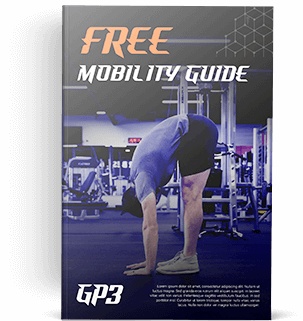Key Points:
1. Unconsciously held identities hold a great deal of power to affect our behavior. Often not in beneficial ways.
2. I recently became aware of such an identity, related to my self-assessed ability to handle stress.
3. Facing these influential identities is often uncomfortable, but always worth it.
Estimated reading time: 5-10 minutes
I write about the concept of identity often. Yup, I’m starting this piece off with a bombshell. To spare you a re-summarization of my entire philosophy, just remember one key point. No identity we hold is essential to who we are, and believing so is guaranteed to cause suffering. Further, the identities of which we’re not aware contain the most power to cause pain and influence our behavior. If you want a more in-depth refresher on the perils of identity, you can check out my musings here and here.
With that, let’s dive in.
Finding a subconscious identity
With the help of my wife, Tess, I recently found an identity that was exerting a subtle but important pull on my actions. This identity could be described as “one who doesn’t get stressed,” or “one who handles stress well.”
Here’s the context. A few months ago, I landed awkwardly on my left wrist after getting fouled during a soccer game. My body tends to heal quickly (another identity), but this injury annoyingly lingered for weeks. Not only did it fail to go away, after a couple of months, the right wrist started bothering me as well.
In response, I started doing some of my favorite mobility exercises, researched new ones, and deliberately avoided movements that bothered my wrists, like pushups and L-sits.
Nothing worked.
The detrimental effects of a hidden identity
When I mentioned something to Tess about being surprised the wrist pain hadn’t improved much, she said something I initially resisted. “It’s probably stress.” My immediate response was something like, “What do you mean? I’m not stressed.” At some point in my life, I had obviously internalized the belief that stress is “bad.” I had also adopted an identity based around “not being someone who burdens others with my problems.”
These identity patterns led me to refuse to recognize the symptoms of overwork-related stress. As a result, my body’s protests grew louder and louder until I could no longer ignore them. That said, I may have continued to try doing so if it hadn’t been for Tess, and I’m very grateful to her for shining a light on what I couldn’t see.
Now, this isn’t merely me sucking up to my wife; it’s an important point to make. To someone who knew me well, the signs of stress were incredibly obvious. But, I couldn’t see what wasn’t compatible with an identity I valued.
Inadvertently Separating Mind and Body
Ironically, I fell for one of the very beliefs I describe as most fundamentally flawed. For multiple months, I stubbornly clung to the idea that my wrist pain must be entirely physical in nature. I thought to myself, “I’m doing all this mobility work, my strength is fine, and I’m prioritizing hydration, rest, and blood flow…Why the heck isn’t this getting any better?!” Even after writing an entire piece about not separating mind and body, I had been hoodwinked by our culture’s tendency to divide the physical from everything else. Stress as the culprit for wrist pain didn’t even cross my mind.
While research linking stress and joint pain is still frustratingly limited, the connection makes intuitive sense. Increased cortisol levels place the body in a persistent state of fight or flight and decrease the amount of energy available for healing. Stress also increases the body’s sensitivity to perceived threats. Due to the injury history of both wrists (a botched power clean in 2013) and the elevated stress in which I found myself, my body was more prone to perceive certain wrist movements and loaded positions as threatening. Normally, exercises like pushups would have been totally fine, but with increased stress levels, my body’s warning system (pain) was on high alert.
Luckily, I started to listen
The way out of this predicament was twofold.
First, I had to stop trying to “get rid of” the pain without listening to what my body was trying to tell me. I had to understand why the pain was present and respect this communication enough to do something about it.
The distinction here is subtle, but understanding the difference between “get rid of” and “get through” is vitally important. The former says, “This needs to stop immediately. I don’t care why or how!” The latter says, “This is something to be understood, experienced, and learned from.”
So, I listened. I acknowledged that I was putting myself under too much stress while insufficiently recovering, and resolved to do something about it.
Second, I acknowledged the identity responsible for overlooking the obvious signs of stress. I took my own advice and remembered the secret exit door from identity traps. “Sometimes.” As I’ve written previously, this little word gives us a simple but powerful way to overcome identity-related suffering.
Let’s apply it here.
The reframe from “one who doesn’t get stressed” to “one who sometimes handles stress well and sometimes doesn’t” creates a huge shift. The second version is so simple and unremarkable that it doesn’t need defending.
And that need for defense is the crux of the issue.
Verbalizing the phrase ‘I feel stressed’ threatens someone who identifies with handling stress well. Because “one who doesn’t get stressed” is black and white, one with that identity subconsciously understands that it’s only true until the moment they become stressed. If they admit to being stressed, by definition, they’re no longer what they thought they were. This realization is painful enough to activate some internal defense mechanisms. As a result, feelings of stress are either not expressed aloud or outright denied, allowing their detrimental effects to compound.”
But what if we remove the binary aspect of the identity? “Sometimes I handle stress well and sometimes I don’t.” Nobody’s getting worked up over that, are they? What a relief!
So, that’s what I did. Newly freed from the burden of not admitting the stress I’d been feeling, I did just that. Then I took deliberate steps to reduce my evening workload. I also made some modifications to my sleeping and recovery habits. After acknowledging what I’d initially been unknowingly resisting, I’m happy to report that in the past month, the wrist pain has diminished greatly.
We need to be patient with ourselves. This isn’t easy.
I want to take a moment here and acknowledge that discovering hidden identities can be a humbling and even psychologically painful process. As I’ve mentioned multiple times in previous pieces, when a deeply-held identity is challenged, it can feel like being faced with death. So, we’ll often resist the loosening of these identities. Even if we’re willing to examine ourselves in this way, our thoughts may throw a temper tantrum. “I AM someone who handles stress well! You’ll never convince me otherwise!”
In these cases, when we remember the “sometimes exit door,” our minds and our egos will often try to strike a bargain. “Well, maybe I’m someone who handles stress well most of the time,” or “I’m someone who rarely gets stressed.”
These are still identity traps. Subtler, to be sure, but traps nonetheless. So be on the lookout for them.
The key here is simply to bring awareness to the identity patterns that may be unconsciously shaping our behavior. Upon doing so, we remove their power to alter our actions without our permission. The best part is, you can then choose how much or how little to engage with those identities. And that’s freedom. “Good soccer player” was my biggest identity for a long time. Now that it isn’t, that doesn’t mean I don’t play soccer anymore–far from it. However, I can now play my heart out without feeling the need to protect this identity like my life depends on it. Even after losing! Pretty nifty, huh?
Lately, I’ve been on a mission to find areas in which unidentified identity patterns affect my actions. Next week, I’ll share another one I found, this time related to nutrition. Stay tuned! And in the meantime, be on the lookout for these identity patterns in your own life so that you can free yourself from the burden of having to defend something that doesn’t need defending. I promise it’ll be worth it.
Before you go, I’d love to hear from you! If you feel comfortable sharing, have you found an identity that you hold in “black and white” terms about yourself? Reply to this email and let me know!

